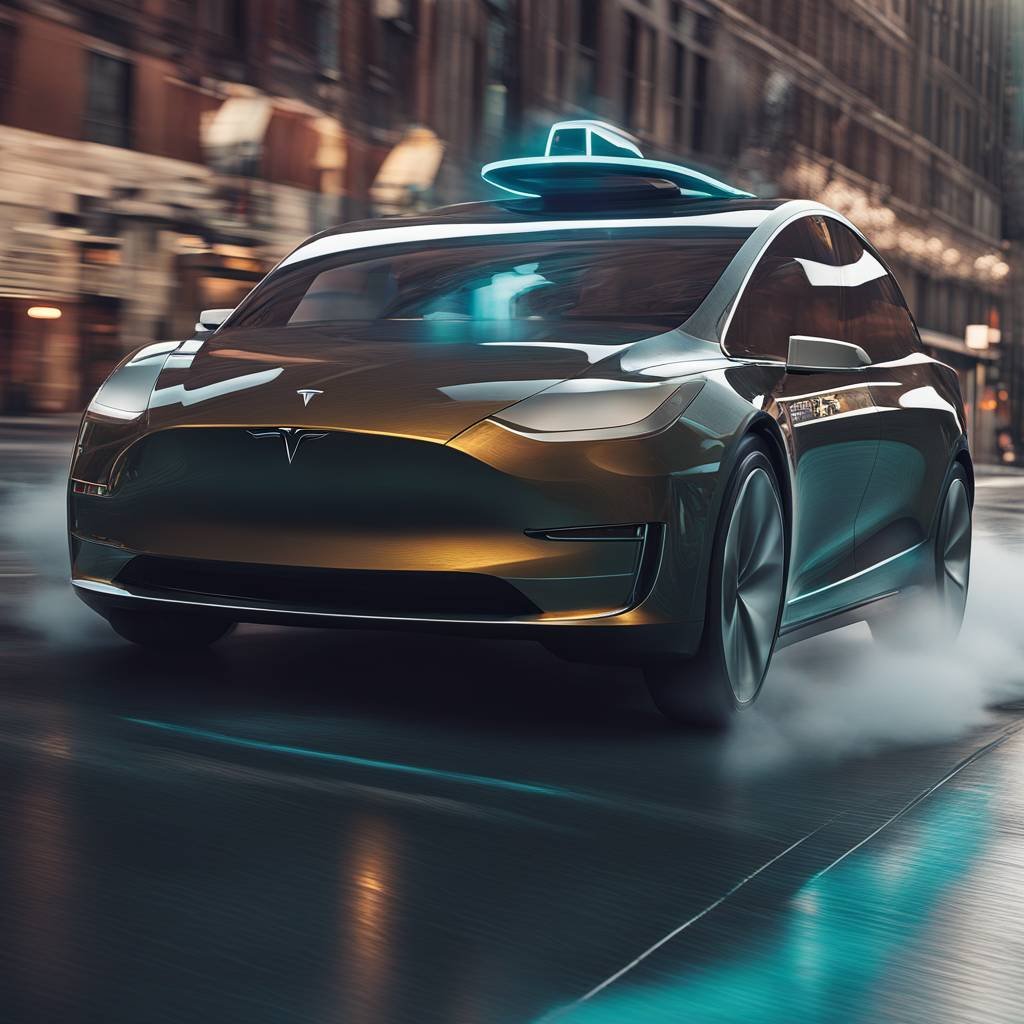Summary
– Cutting-edge self-cleaning techniques revealed in Tesla’s patent filing for its robotaxi fleet
– Automation is seen as the way forward for keeping self-driving robotaxis clean
– Sensors and processor would detect car’s hygiene state and generate a sanitation routine
– Methods for self-sanitization include infrared radiation, UV lighting, HVAC controls, and disinfection vapor
– Skepticism urged for mass deployment due to potential challenges with supporting infrastructure and cleaning capabilities
Article
Tesla’s Self-Cleaning Robotaxis: A Game-Changer in Autonomous Transportation
In a recent patent filing, Tesla has revealed cutting-edge self-cleaning techniques that it intends to use on its future robotaxi fleet. As automakers and tech companies envision a world filled with self-driving vehicles, the issue of cleanliness becomes a critical factor to address. Tesla believes that relying on humans to clean the robotaxis would be inefficient and laborious, prompting the need for automation in this aspect. The patent application, filed with the World Intellectual Property Organization, showcases the innovative technology that Tesla plans to implement to keep its robotaxis free of diseases and pathogens.
The Rise of Robotaxis: Are They the Future of Transportation?
Several automakers and tech companies, including Google’s Waymo and GM’s Cruise, are already exploring the potential of self-driving vehicles. While existing EVs have been retrofitted with autonomous technology, the race is now on to develop ground-up driverless cars like the Tesla Cybercab and the Rimac Verne. The emergence of robotaxis represents a significant shift in the transportation industry, with companies vying to establish themselves as leaders in this emerging market.
Innovative Self-Cleaning Technology: A Closer Look at Tesla’s Patent Disclosure
The patent disclosure sheds light on the sophisticated self-cleaning mechanisms that Tesla plans to incorporate into its robotaxis. Sensors installed in the vehicles will detect the car’s state of hygiene and generate a sanitation routine based on the data gathered. The vehicle will then sanitize itself using methods such as infrared radiation, UV lighting, and HVAC controls to eliminate viruses. Additionally, sensors may be able to detect pathogens and direct disinfection light toward touch surfaces where they are detected, ensuring a clean and safe environment for passengers.
Utilizing Sunlight for Disinfection: A Natural and Effective Approach
In addition to artificial disinfection methods, Tesla’s robotaxis may leverage sunlight as a natural and effective way to disinfect surfaces. The vehicle’s sensors will be able to orient it in a way that maximizes exposure to sunlight, potentially by adjusting the angle of the screen and seats or opening doors and windows to allow more penetration of sunlight. This innovative approach to sanitation highlights Tesla’s commitment to ensuring the highest standards of cleanliness and hygiene in its autonomous vehicles.
Challenges and Considerations: Skepticism and Infrastructure Needs
While Tesla’s self-cleaning robotaxis present a promising solution to maintaining a clean and pathogen-free environment, there are challenges and considerations to be mindful of. Mass deployment of this technology will require a supporting service infrastructure where cleaning robots are installed, a process that may take time to develop. Additionally, the ability of these robots to manage unexpected situations, such as dealing with passengers’ messy or unhygienic habits, remains to be seen. As Tesla unveils its robotaxis on August 8, further insights into the practicality and effectiveness of this innovative self-cleaning technology will be revealed.
Read the full article here


